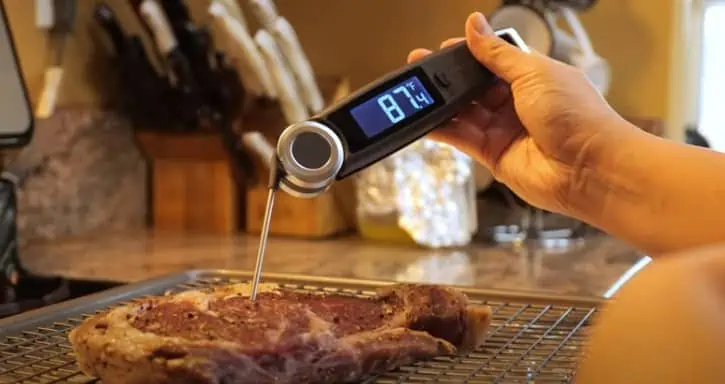Mastering Meat Thermometers for Perfect Chicken Drumsticks
Written By James Morgan
If you're a barbecue enthusiast, you know that achieving perfectly cooked chicken drumsticks can be an elusive task. The secret weapon? A trusty meat thermometer. Understanding how to use a meat thermometer chicken drumsticks can save you from overcooking or, worse, serving undercooked poultry. Let's dive into the nitty-gritty of mastering this skill.

Why a Meat Thermometer is Essential
For anyone serious about barbecue, a meat thermometer is not just an accessory; it's a necessity. Here's why:
- Accuracy: Ensures your meat is cooked to a safe temperature.
- Consistency: Helps you achieve consistent results every time you cook.
- Juiciness: Prevents overcooking, keeping your meat succulent.
Choosing the Right Meat Thermometer
There are various types of meat thermometers available, each with its own set of features and benefits:
Dial Thermometers
These are the traditional meat thermometers that many people are familiar with. They are straightforward to use but can take longer to provide an accurate reading.
Digital Instant-Read Thermometers
These thermometers provide a quick and accurate reading, usually within seconds. Perfect for those who want precision without the wait.
Wireless Meat Thermometers
These advanced thermometers allow you to monitor the temperature from a distance, making them convenient for busy cooks.

How to Use a Meat Thermometer with Chicken Drumsticks
To get the best results, follow these steps:
Step 1: Preparation
Before you start cooking, ensure your meat thermometer is clean and calibrated. For calibration tips, check how to adjust your meat thermometer.
Step 2: Insertion
Insert the thermometer into the thickest part of the drumstick without touching the bone. This will provide the most accurate reading.
Step 3: Reading
Wait for the thermometer to stabilize and note the temperature. Chicken should be cooked to an internal temperature of 165F (74C).

Common Mistakes to Avoid
Even seasoned cooks can make mistakes. Here are some common pitfalls:
- Incorrect Placement: Placing the thermometer too close to the bone can give false readings.
- Not Waiting: Removing the thermometer too quickly can result in inaccurate readings.
- Neglecting Calibration: An uncalibrated thermometer can lead to incorrect temperature readings.
Additional Tips for Perfect Chicken Drumsticks
Here are some extra pointers to elevate your barbecue game:
Flavor Profiles
Experimenting with different marinades and rubs can add a unique touch to your chicken drumsticks.
Indirect Cooking
Using indirect heat can help ensure even cooking and prevent flare-ups.
Resting Period
Let the drumsticks rest for a few minutes after cooking to allow the juices to redistribute.
For more detailed cooking tips, you might find this guide on using meat thermometers helpful.
Final Thoughts
Understanding how to use meat thermometer chicken drumsticks can significantly improve your barbecue outcomes. With the right tools and techniques, you'll be serving perfectly cooked, juicy chicken drumsticks every time.
FAQ
What type of meat thermometer is best for chicken drumsticks?
Digital instant-read thermometers are highly recommended due to their accuracy and quick reading time.
Can I leave the thermometer in the drumsticks while cooking?
Some oven-safe models can be left in, but most instant-read thermometers should be removed after checking the temperature.
Why is it important to avoid touching the bone with the thermometer?
Touching the bone can give an inaccurate reading, as bones heat up differently than muscle tissue.
As an Amazon Associate, I earn from qualifying purchases.
As an Amazon Associate, I earn from qualifying purchases.



